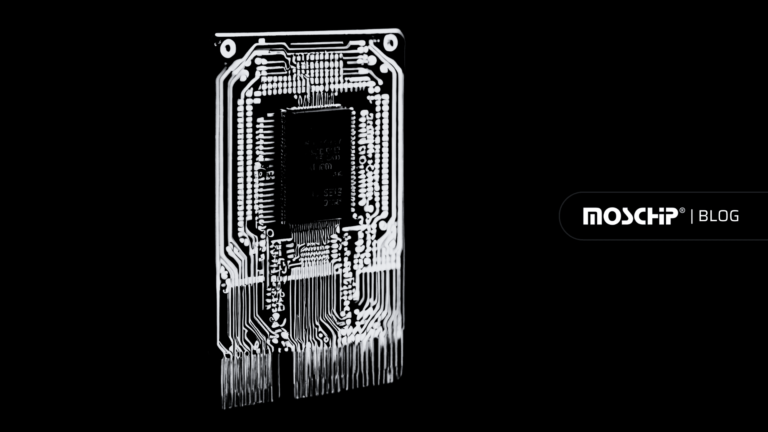Selection of FPGAs and GPUs for AI Based Applications
Artificial Intelligence (AI) refers to non-human, machine intelligence capable of making decisions in the same way that humans do. This includes contemplation, adaptability, intention faculties, and judgment. Machine vision, robotic automation, cognitive computing, machine learning, and computer vision are all applications in the AI market. AI is rapidly gaining traction in a variety of industry sectors like automotive, consumer electronics, media & entertainment, and semiconductors, heralding the next great technological shift. The scope for semiconductor manufactures is expected to grow in the coming years. As the demand for machine learning devices grow around the world, many major market players belonging to EDA (Electronic Design Automation), graphics cards, gaming, multimedia industries are investing to provide innovative and high-speed computing processors. While AI is primarily based on software algorithms that mimic human thoughts and ideas, hardware is also an important component. Field Programmable Gate Arrays (FPGAs) and Graphics Processing Units (GPUs) are the two main hardware solutions for most AI operations. According to the precedence research group, the global AI in hardware market was valued at USD 10.41 billion in 2021 and it is predicted to reach USD 89.22 billion by 2030, with a CAGR of 26.96 percent from 2022 to 2030.

FPGA vs GPU
Overview of FPGA
A hardware circuit with reprogrammable logic gates is known as a field-programmable gate array (FPGA). While a chip is being used in the field, users can design a unique circuit by overwriting the configurations. This contrasts with standard chips, which cannot be reprogrammed. With an FPGA chip, you can build anything from simple logic gates to multi-core chipsets. The usage of FPGAs is very much popular where intrinsic circuitry is essential, and changes are expected. ASIC prototyping, automotive, multimedia, consumer electronics, and many more areas are covered by FPGA applications. Based on the application requirement, either low-end, mid-range, or high-end FPGA configurations are selected. ECP3 and ECP5 series from Lattice semiconductor, Artix-7/Kintex-7 series from Xilinx, and Stratix family from Intel are some of the popular FPGA designs for low power & low design density.
The logic blocks are built using look-up tables (LUTs) with a limited of inputs and are built using basic memory such as SRAM or Flash to store Boolean functions. Each LUT is linked to a multiplexer and a flip-flop register to support sequential circuits. Similarly, many LUTs can be used to create complex functions. Read our FPGA blog to know more about its architecture.
FPGAs are more suitable for embedded applications and use less power than CPUs and GPUs. These circuits are not constrained by design like GPUs and can be used with bespoke data types. Additionally, FPGAs’ programmability makes it simpler to modify them to address security and safety issues.
Advantages of using FPGAs
Energy efficient
Designers can precisely adjust the hardware to meet the requirements of the application, thanks to FPGAs. With its low power consuming capability, overall power consumption for AI and ML applications can be minimized. This could increase the equipment’s lifespan and reduce the training’s overall cost.
Ease of flexibility
FPGA offers the flexibility of programmability for handling AI/ML applications. One can program one individual block or an entire block depending on the requirements.
Reduced latency
FPGAs excel at handling short batch phrases with reduced latency. Reduced latency refers to a computing system’s ability to respond with minimal delay. This is critical in real-time data processing applications such as video pre and post processing, and text recognition, where every microsecond counts. Because they operate in a bare-metal environment without an operating system, FPGAs and ASICs are faster than GPUs.
Parallel processing
The operational and energy efficiency of FPGAs is substantially improved by their ability to host several tasks concurrently and even designate specific sections of the device for particular functions. Small quantities of distributed memory are included in the fabric of the FPGAs’ special architecture, bringing them closer to the processor.
Overview of GPU
The original purpose of graphic processing units (GPUs) was to create computer graphics, and virtual reality environments that depended on complex computations and floating-point capabilities to render geometric objects. A modern artificial intelligence infrastructure would not be complete without them and are very much suitable for the deep learning process.
Artificial intelligence needs a lot of data to study and learn from to be successful. To run AI algorithms and move a lot of data, demands a lot of computational power. GPUs can carry out these tasks because they were created to quickly handle the massive volumes of data required for generating graphics and video. Their widespread use in machine learning and artificial intelligence applications is due in part to their high computing capabilities.
GPUs can handle several computations at once. As a result, training procedures can be distributed, which greatly speeds up machine learning activities. With GPUs, you may add several cores with lower resource requirements without compromising performance or power. Various types of GPUs are available in the market and generally fall into the following categories such as data center GPUs, consumer grade GPUs, and enterprise grade GPUs.
Advantages of using GPUs
Memory bandwidth
GPUs have good memory bandwidth due to which they tend to perform computation quickly in the case of deep learning applications. GPUs consume less memory when training the model on huge datasets. With up to 750GB of memory bandwidth, they can really accelerate quick processing of AI algorithms.
Multicores
Typically, GPUs consists of many processor clusters that can be grouped together. This makes it possible to greatly boost a system’s processing power particularly to AI applications with parallel inputs of data, convolutional neural network (CNN), and training of ML algorithms.
Flexibility
Because of a GPU’s parallelism capabilities, you can group GPUs into clusters and distribute jobs among those clusters. Another option is to use individual GPUs with dedicated clusters for training specific algorithms. GPUs with high data throughput can perform the same operation on many data points in parallel, allowing them to process large amounts of data at unrivalled speed.
Dataset Size
For model training, AI algorithms require a large dataset, which accounts for memory-intensive computations. A GPU is one of the best options for efficiently processing datasets with many datapoints that are larger than 100GB in size. Since the inception of parallel processing, they have provided the raw computational power required for efficiently processing largely identical or unstructured data.
The two major hardware choices for running AI applications are FPGAs and GPUs. Although GPUs can handle the massive volumes of data necessary for AI and deep learning, they have limitations regarding energy efficiency, thermal issues, endurance, and the ability to update applications with new AI algorithms. FPGAs offer significant benefits for neural networks and ML applications. These include ease of AI algorithm updates, usability, durability, and energy efficiency.
Additionally, significant progress has been made in the creation of software for FPGAs that makes compiling and programming them simpler. For your AI application to be successful, you must investigate your hardware possibilities. As it is said, carefully weigh your options before settling on a course of action.
MosChip AI/ML experts have extensive expertise in creating efficient Machine Learning solutions for a variety of edge platforms, including CPUs, GPUs, TPUs, and neural network compilers. We also offer secure embedded systems development and FPGA design services by combining the best design methodologies and the appropriate technology stacks. We help businesses in building high-performance cloud and edge-based AI/ML solutions like key-phrase/voice command detection, face/gesture recognition, object/lane detection, human counting, and more across various platforms.
About MosChip:
MosChip has 20+ years of experience in Semiconductor, Product Engineering services & Software, security with the strength of 1300+ engineers.
Established in 1999, MosChip has development centers in Hyderabad, Bangalore, Pune, and Ahmedabad (India) and a branch office in Santa Clara, USA. Our software expertise involves platform enablement (FPGA/ ASIC/ SoC/ processors), firmware and driver development, systems security, BSP and board bring-up, OS porting, middleware integration, product re-engineering and sustenance, device and embedded testing, test automation, IoT, AIML solution design and more. Our semiconductor offerings involve silicon design, verification, validation, and turnkey ASIC services. We are also a TSMC DCA (Design Center Alliance) Partner.
Stay current with the latest MosChip updates via LinkedIn, Twitter, FaceBook, Instagram, and YouTube







